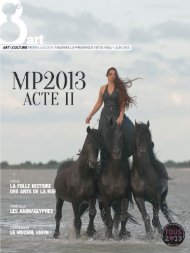Life Nature Magazine
themed ‘Dusk until Dawn’. These times are to me, some of the most exciting to experience wildlife. When I can make it out of bed in time for dawn, the chorus of birds chattering and singing above me makes the wrestle with my tiredness all worth it. As sun sets, some of the most secretive animals come out of their day time hiding places. Foxes and badgers can be seen by the lucky, and bats’ sonar can be heard with a handy bat detector. The time between dusk and dawn is fascinating too. Whilst most of us are tucked up in bed asleep, many animals are exploiting this quieter period, with multitudes of adaptations allowing them to use the darkness to their advantage. From this issue, many of the original team, including myself, are ‘phasing out’. We’re looking for new team members – see the careers section for more information on how to get involved. Whilst some of us will still be involved in the next issue, we’ll be taking less on, so we’d like to thank
themed ‘Dusk until Dawn’.
These times are to me, some of
the most exciting to experience
wildlife. When I can make it
out of bed in time for dawn,
the chorus of birds chattering
and singing above me makes
the wrestle with my tiredness
all worth it. As sun sets, some of
the most secretive animals come
out of their day time hiding
places. Foxes and badgers can
be seen by the lucky, and bats’
sonar can be heard with a handy
bat detector. The time between
dusk and dawn is fascinating
too. Whilst most of us are
tucked up in bed asleep, many
animals are exploiting this
quieter period, with multitudes
of adaptations allowing them
to use the darkness to their
advantage. From this issue,
many of the original team,
including myself, are ‘phasing
out’. We’re looking for new
team members – see the careers
section for more information
on how to get involved. Whilst
some of us will still be involved
in the next issue, we’ll be taking
less on, so we’d like to thank
You also want an ePaper? Increase the reach of your titles
YUMPU automatically turns print PDFs into web optimized ePapers that Google loves.
EVOLUTION FROM DUSK UNTIL DAWN AUTUMN ISSUE<br />
Bats have evolved many different adaptations, their skull shape determines their<br />
ability to produce sonar either orally or nasally.<br />
<br />
Jamaican fruit bat Artibeus<br />
jamaicensis (nasal sonar)<br />
Greater mouse eared bat<br />
Myotis myotis (oral sonar)<br />
The pressure for both bats and moths to be highly<br />
effective at their own game has escalated into an<br />
evolutionary arms race, with each party continually<br />
updating and fine-tuning their biological weapons.<br />
University, US, have recently<br />
<br />
<br />
against at least four species<br />
of Myotis spp. bats in their<br />
natural habitat in Arizona.<br />
Sonar jamming can give the<br />
moth those essential extra<br />
seconds it needs to escape and<br />
survive.<br />
The pressure for both bats and<br />
<br />
their own game has escalated<br />
into an evolutionary arms race,<br />
with each party continually<br />
<br />
biological weapons. Hunting<br />
with sonar in bats has selected<br />
on moths to avoid predation<br />
<br />
bias in the ability to detect<br />
ultrasound. In turn, the evasive<br />
<br />
use of ultrasound against the<br />
<br />
tuning of sonar techniques<br />
in bats. The Palaearctic pond<br />
bat (Myotis dasycneme) can<br />
switch between the type of<br />
sonar that it uses, alternating<br />
the frequency and pitch of<br />
ultrasonic clicks in response<br />
to moth activity. It can also<br />
<br />
basic trawling along the water<br />
surface to a form of aerial<br />
hawking. Some bats even go<br />
into silent or ‘whispering’<br />
mode when making their<br />
<br />
sneak up on their target. With<br />
each escalation in biological<br />
weaponry, there must be a<br />
greater investment in energy,<br />
physiology and behaviour.<br />
Whether an evolutionary arms<br />
race between bats and moths<br />
will conclude with a winner or<br />
cycle continuously is hard to<br />
<br />
group of insects that make up<br />
insectivorous bats’ diets and<br />
there are many others that<br />
make far easier prey items. In<br />
the meantime, there is plenty<br />
of entertaining research to be<br />
done for curious and creative<br />
biologists eager to follow the<br />
game.<br />
organism to a hunting bat must surely go to<br />
the Tiger moth (Bertholdia trigona), which<br />
produces a series of ultrasonic clicks that<br />
serve to ‘jam’ the signals of hunting bats.<br />
This is an exceptionally tricky and precision<br />
piece of defence as the moth clicks must<br />
<br />
<br />
If successful, moths can disrupt the auditory<br />
<br />
the returning echoes and so ‘jam’ the<br />
sonar signal. Biologists from Wake Forest<br />
Written by Dr<br />
Michelle Taylor,<br />
Associate Research<br />
Fellow at the<br />
University of Exeter,<br />
Cornwall Campus.<br />
19

















